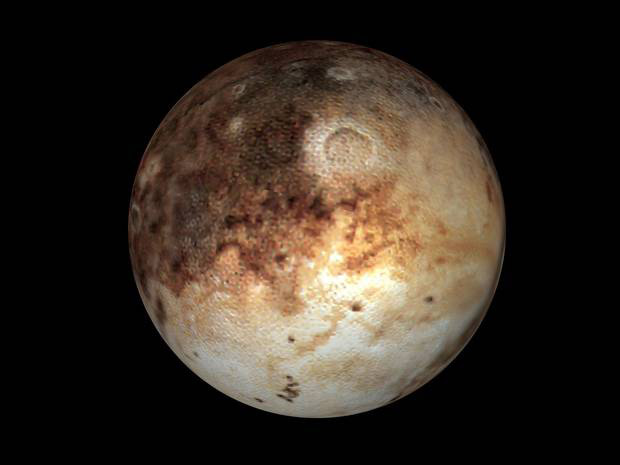Nowadays, we have already found there are more than
eight planets. Mercury, Venus, the Earth, Mars, Jupiter, Saturn, Neptune and
Pluto. However, Pluto was once
considered out of this list for being viewed as a dwarf planet by the
astronomers. Last year, New Horizons reached Pluto and took new measurements
and found out new things that can help scientists understand this planet
better. Now, ten facts you should know about this planet that still remain as a
mysterious object in our solar system.
1. Baptizing
while having breakfast: Pluto was discovered in 1930, since then there had been
endless discussions regarding the name of that planet. Nobody was able to nail
it. But one day, a girl whose name was Venetia Burney, a 11 year-old girl, was
having breakfast with her family just like all kids do in the morning in England.
She had been learning about the planets and their distances from the sun. She
had also been reading upon Greek mythology, so we can say this girl was learned
enough as to name anything. During breakfast time, she was then in company with
her family when she tossed the name around: “Pluto could be a good name for the
planet”. After this remark, her grandfather went to one of his best friend’s
place, (Herbert Hall Turner , a professor of astronomy at the University of
Oxford) and talked to him about the suggested name. Then, Turner telegraphed a
message to the Lowell Observatory in Flagstaff stating Pluto could be
considered as a potential name for the planet. Once the name was let known and
suggested, they loved it and that was how Pluto was baptized.
The name was also taken because they
it was Percival Lowell’s initials.
2.
Weird
Small world: Pluto is the smallest planet of the Solar system. Even smaller
than Mercury. There are other moons which are larger than Pluto. They are: Ganymede,
Titan, Callisto, Io, Europa, Triton, and our Moon. Nonetheless, it was believed
that Pluto was much smaller but recent researches revealed that it is smaller
than Earth’s moon but larger than previously thought based on the new
measurements taken by New Horizon, a probe sent into space in 2006.
People think this has been the reason why Pluto was
downgraded to a dwarf planet. Contrary to this belief, Pluto was downgraded to
a dwarf planet for being considered a member of the Kuiper belt
3.
Not
the last all the time. Due to the eccentricity of its orbit, Pluto passes to be
the eighth planet of the solar system for twenty years out of its 248 year-
orbit around the Sun, meaning that during 20 years, Pluto reaches its closes
distance from the Sun. Neptune becomes the ninth planet for this period of
time. Therefore, whenever you read a book that assumes Pluto is the ninth
planet.
4.
Pluto
was named after the god of the Underworld, Charon. Pluto is not alone indeed.
Charon, its companion and its massive moon, was named after the ferryman who
carries the dead souls across the river Styx. Its other moons are Nix, Styx,
Hydra and Kerberos. Pluto and Charon form a binary system due to Charon’s size
which makes it possible.
5.
A
satellite or a planet? : This question regarding Pluto has been around in
forums for many years. In fact, the planet is believed to be one of the Neptune’s
moons which escaped and made its own orbit. Additionally to this, it is known
that Pluto’s orbit is unpredictable. The scientific community has managed to
calculate its orbit for the next 10 or 20 million years, but not beyond that
limit.
6.
Too
cold. 5 hours to see the sunlight in that odd world. Nevertheless, Pluto sometimes
has its atmosphere. This phenomenon happens when the dwarf planet is at its
closest relative distance from the Sun thawing its atmosphere which is
basically formed by nitrogen, methane and carbon monoxide.
Clyde
Tombaugh into space: he was the scientist who discovered this planet. He died
in 1997, two years before the New Horizon’s launch. His final request was that
of his ashes being sent into space. His ashes are now travelling on board of
the probe New Horizon on its way to the asteroid Kuiper belt that is a
disc-shaped zone beyond Neptune’s orbit populated by tiny icy objects.
8.
Rock
as Rocky. Pluto seems to have a rocky core, as per some studies and researches.
It is believed to be composed of a rocky core, a mantle of water ice and a
surface covered with methane ice and frosty nitrogen. However, owing to the
distance, it has been hard to ascertain what exactly comprises Pluto.
9.
Pluto
is retrograde. Its rotation is retrograde, it means, it rotates from east to west
just like the planets Venus and Uranus. It completes one rotation in a period
of time of six Earth days. There are also extreme variations in its seasons
because of its tilt.
10.
Pluto
is red, not grey. Pluto turned out to be red, like his brother Mars. Charon,
its main moon is grey instead. This is a sign that both objects are composed of
different materials.



Comentarios
Publicar un comentario